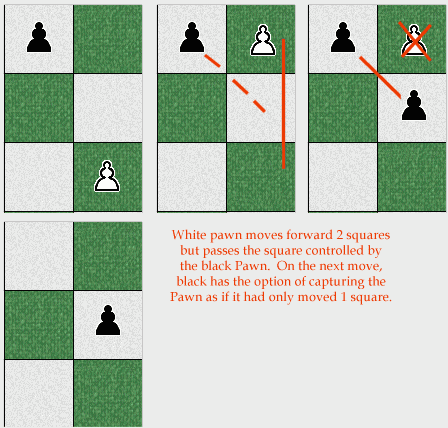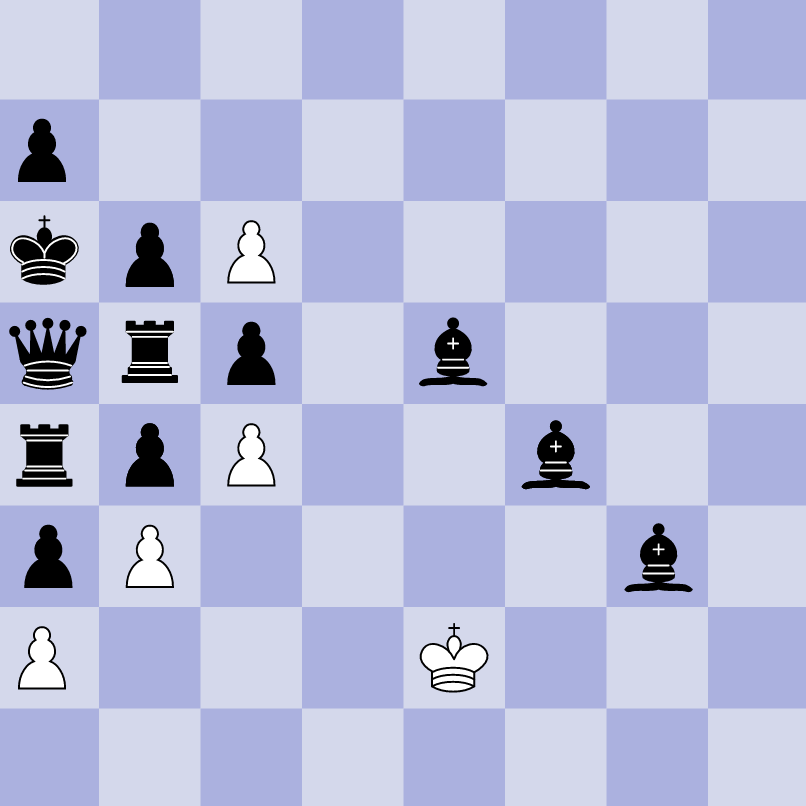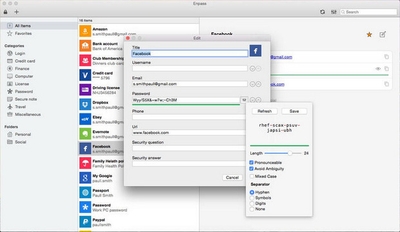

This special move can happen in any phase of the game and sometimes it can come in very handy if one player advances his center pawn into enemy territory. It didn’t seem fair for a pawn to jump safely past other pawns and not give them a chance to take. The En Passant rule was made up 500 years ago when pawns were first allowed to move two squares.
#Enpass in chess how to#
Related Post: How to write chess moves in algebraic notations En Passant in different stages of the game In our previous example, the en passant is notated as cxd6e.pĭon’t forget that although you will not capture en passant very often, it is still an important move to master. After the capture, you can add a suffix e.p which represents the en passant. The destination square isn’t one of the captured pawns. Captures made by en passant rules are notated algebraically by specifying the pawn structure file with X and then the destination square. In a formal tournament or competition, each player has the chance to record the moves they make in chess notation. An en passant capture may only be made on the very next turn.In other words, it is captured in “in passing” The pawn is taken on the square is passes over.


A passed pawn is an excellent advantage for the player who has it. When the pawn moves changed, however, the dynamics of the game also changed. To make games faster, people modified pawn moves: they could now jump two squares when leaving their home squares. In the olden times, pawns could move just one square at a time. The en passant move is closely related to another rule that was created centuries ago to make chess more interesting. The diagram below shows what the move 3.exd6 looks like: This is what 3. Note, though, that you should write down the square where the pawn has landed, not the one where the captured pawn was. The notation for an en passant capture is the same as any other pawn capture. To make these rules clear for you, take a look at the diagram below. Another instance where this capture is not allowed is when the enemy pawn lands right next to your pawn but only after making two moves. This type of capture cannot happen if the capturing pawn has already advanced four or more squares. If the player does not capture en passant on that turn, they no longer can do it later. The en passant capture must be performed on the turn immediately after the pawn being captured moves.The captured pawn must have moved two squares in one move, landing right next to the capturing pawn.The capturing pawn must have advanced exactly three ranks to perform this move.There are a few requirements for the move to be legal: You move your pawn diagonally to an adjacent square, one rank farther from where it had been, on the same file where the enemy's pawn is, and remove the opponent's pawn from the board. To perform this capture, you must take your opponent's pawn as if it had moved just one square. This type of capture is the only one in chess where the capturing piece doesn't land on the same square as its victim. With en passant, though, things are a little different. This is the regular way a pawn can capture another piece. It moves to the captured piece's square and replaces it. Pawns can usually capture only pieces that are directly and diagonally in front of them on an adjacent file. "En passant" is a French expression that translates to "in passing", which is precisely how this capture works. The en passant rule is a special pawn capturing move in chess.

Make sure you know everything about this rule, so you don't get caught off guard! En passant is one of those special chess rules that can surprise the less experienced players.


 0 kommentar(er)
0 kommentar(er)
